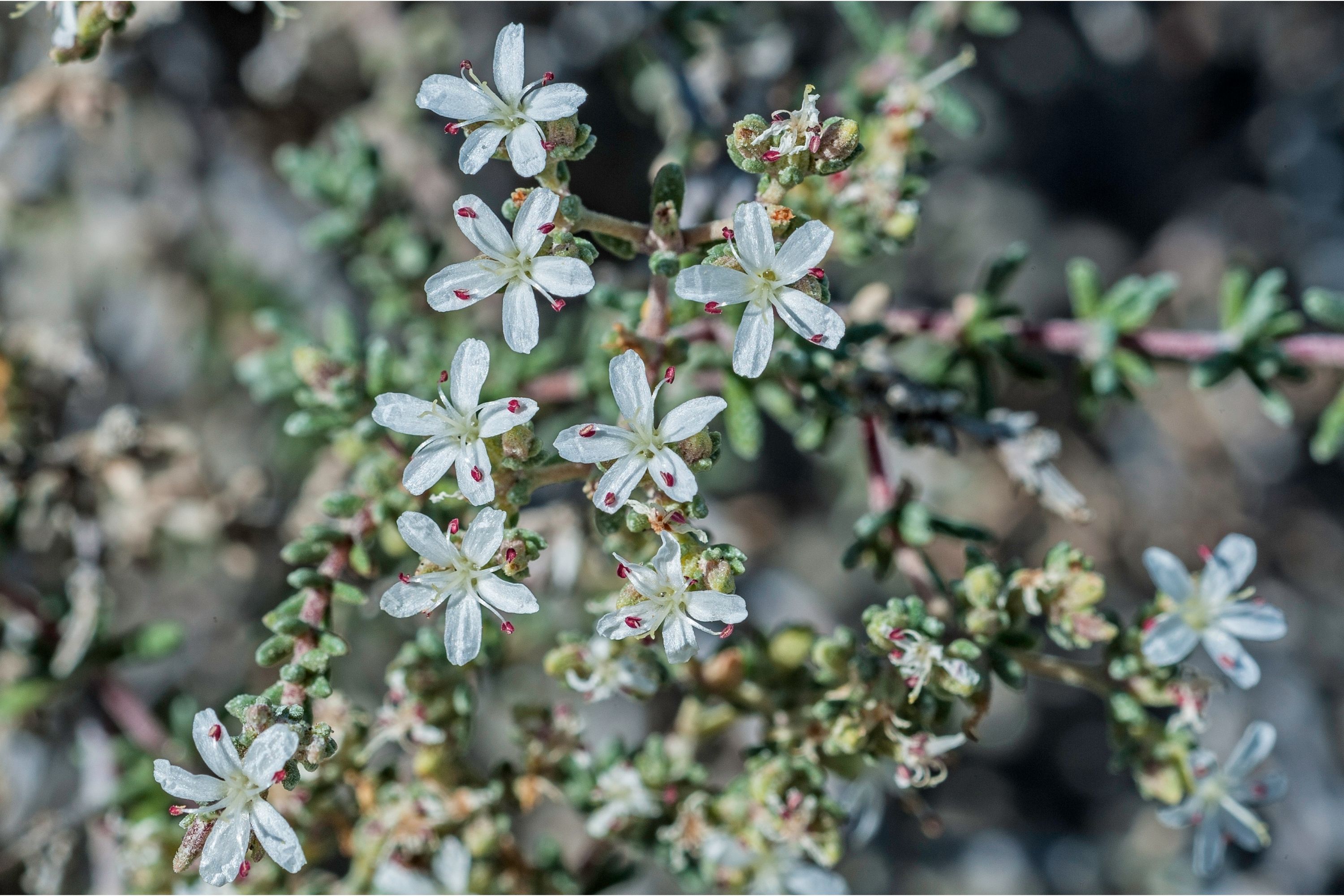James' Seaheath
(Frankenia jamesii)

Description
Frankenia (sea heath) is the only genus in the Frankeniaceae family of flowering plants.Other genera have been recognized within the family, such as Anthobryum, Hypericopsis and Niederleinia, but molecular phylogenetic studies have consistently shown that they all belong inside Frankenia. Frankenia comprises about 70–80 species of shrubs, subshrubs and herbaceous plants, adapted to saline and dry environments throughout temperate and subtropical regions. A few species are in cultivation as ornamental plants. Frankenia species are salt tolerant (halophytic) or drought tolerant (xerophytic) shrubs, subshrubs or herbaceous plants. They have opposite, simple leaves, generally small and somewhat heather-like, and often with salt-excreting glands in sunken pits. Their flowers are small, either solitary or borne in various kinds of cyme. Each flower has four to seven sepals, joined at the base into a tube, and four to seven overlapping petals, narrowed at the base. The stamens are often arranged in two whorls of three each. The ovary is made up of one to four carpels (usually three). The fruit is a capsule, enclosed in the persistent sepals. The seeds have a central embryo with considerable starchy endosperm on each side. The genus Frankenia was erected by Carl Linnaeus in 1753, with three species, the first named being Frankenia laevis. The genus name honours Johan Franck or Frankenius (1590–1661), a professor of botany at Uppsala, Sweden. Linnaeus initially used an artificial system to group genera (his systema sexuale). Later, he and other botanists adopted "natural" systems of classification, using orders or families. Augustin Saint-Hilaire in 1815 was the first to suggest, tentatively, that Frankenia might be the type of a new family.His suggestion was formalized in a publication edited by Nicaise Auguste Desvaux in 1817. At least six genera have been recognized within the family Frankeniaceae at various times. Only Frankenia is accepted as of March 2018. Genera that have been recognized include Hypericopsis Boiss. (not Hypericopsis Opiz which is a synonym of Hypericum), Anthobryum and Niederleinia. Hypericopsis, with the sole species Hypericopsis persica, was still accepted by Klaus Kubitzki in 2003; however a morphological study published in the same year concluded that Hypericopis belonged in Frankenia. A molecular phylogenetic study in 2004 reached the same conclusion.
Taxonomic tree:







